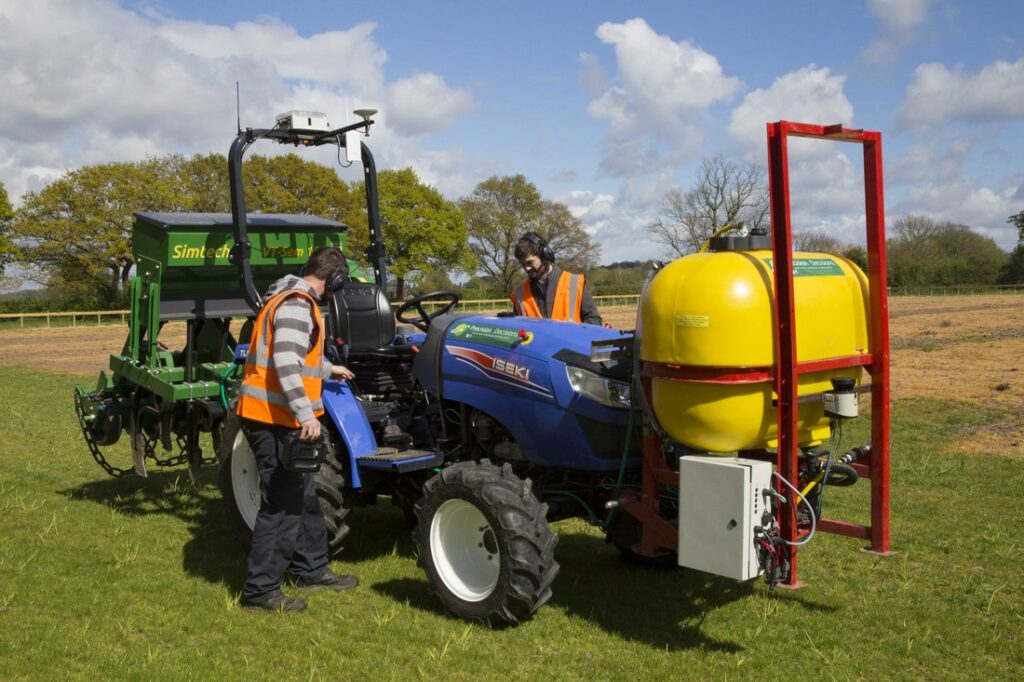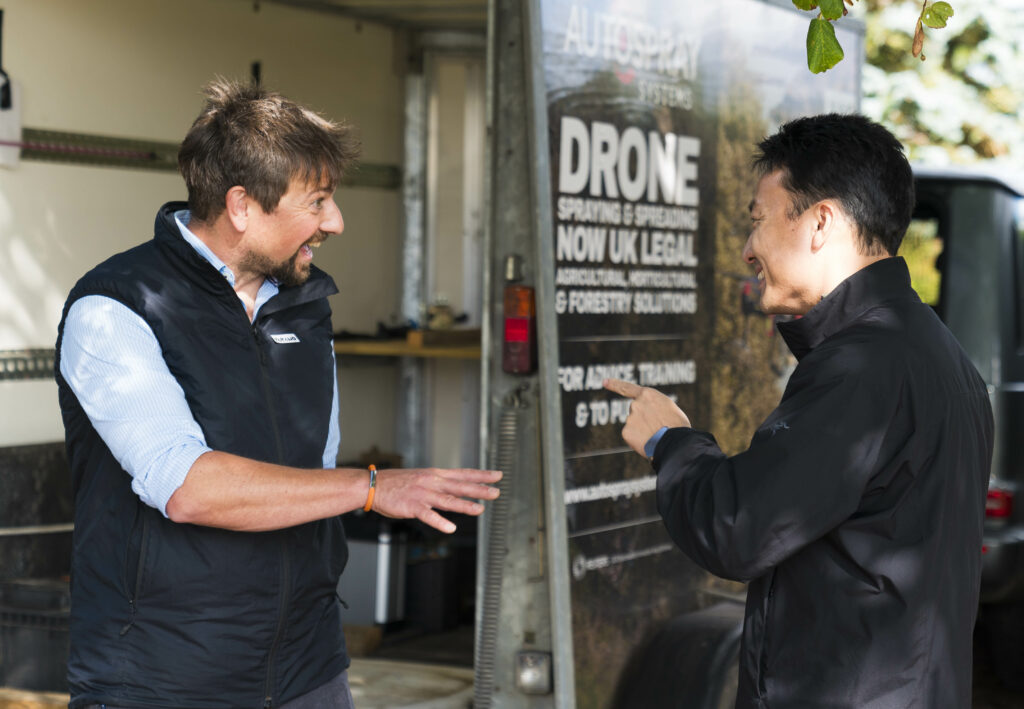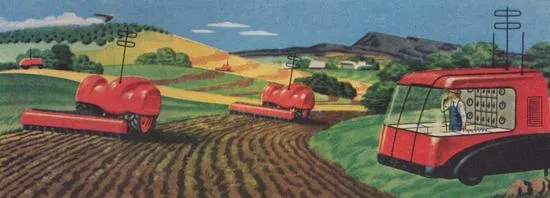10 years after starting a project that delivered a fully autonomously managed crop, Jonathan Gill looks forward to what the next ten years may bring.
I have spent 20 years working with robotics in a professional capacity and have seen massive benefits with machines being programmed to perform the dull, dirty, dangerous tasks that we do not want to do.
Ten years ago, while working at Harper Adams University I discussed many times that automated agricultural machinery would be in our fields by now. That led to being the co-creator of the Hands-Free Hectare, a pioneering project to show the capabilities of automation in farming where we were the world’s first to grow a crop from start to finish with autonomous machines.
After completing the first year of the Hands-Free Hectare I had the opportunity and honour to be awarded a Nuffield farming scholarship where I travelled the world asking the question to universities, companies and individuals “How do we embrace automation in agriculture?” (You can find my report on the Nuffield farming scholarships website https://www.nuffieldscholar.org/)
Four years on from presenting my report I have not been disappointed. In my home county Shropshire, there are over five farms using the solar powered Farmdroid to precision plant and weed their crops.

There are challenges still with automation regarding safety concerns and the ability of machines used for farming to be left to their own devices without a human in the loop. Investment into automation in agriculture is a huge business. However, it’s still not easy combining the information of multiple sensors and cameras to make real time decisions. Therefore, machines in agriculture classified to achieve true level 5 autonomy are still few and expensive. In my opinion the next 10 years will be the birth of true automation in agriculture.
I’m still constantly surprised by the ingenuity and innovation in farming and this creativity should not be lost to programmers who may not be talking to a skilled but ageing workforce. I expect to see tractors not looking like tractors, machines without cabs and electric powertrains working in our fields. The operations of these field robots now being made by smart implements rather than the vehicle, and these decisions made on the local soil and crop conditions etc.
The gateway to robotics and automation in agriculture is drones. Let’s not forget they are now commonplace. These are after all autonomous robots which are simple, affordable and reliable and are in use by many farmers and landowners. Not only do they have cameras for their ‘eye in the sky’ enabling crop inspection but have enhanced features such as AI-enhanced obstacle detection and return home functionality. However, their uses are still being realised with the larger spray drones coming popular due to their affordability and versatility for additionally being able to deploy seed.

I have seen so many benefits for drone-based crop protection globally from Brazil to Indonesia in fields and trees, and watched the tech-savvy older farmers using drones to protect their crops from their mobile phone to great advantage. However, the UK’s prohibitive regulations are preventing agrochemicals being applied to crops and thus holding us back from developing pioneering applications.
Unfortunately, with drones I’m seeing history repeat itself as seen with tractors increasing in size for work capacity where they had to have a single driver. The legality of only allowing one operator to fly one drone at any moment has led to current models made by DJI and XAG now weighing in excess of 80Kg where they used to be sub 25Kg, three times the weight and double the size.
While they are definitely able to perform field tasks at higher work rates, they are now producing the negative effect of increased downforce that can flatten crops. Additionally, it makes these drones harder to carry, store and transfer to the field. Lessons learned from swarming operations like those seen with drone displays seen at major world events such as the Olympics and Kings Coronation are not being transferred across to our industry, as could be with smaller drones in flocks performing tasks in cooperation.
My future hope is a flock of drones performing tasks across the fields, all self-launched and tasked by a AI field manager which knows the best conditions day or night to plant or protect crops even down to a single plant.

With the advancement of drone technologies there may be opportunities to plant seeds in a completely different way. We are very familiar with our modern farming methods that require big machines to place seeds at the correct depth in our soils. I see inspiring developments to technology and agriculture in all corners of the world and one potential is the nature inspired air dropped E-Seed. This is packaged into a compostable carrier planting itself, with all the fertilisers and mycorrhiza fungi to establish successfully.
“The seed of these plants is carried inside a thin, tightly wound stalk. During rain or high humidity, the corkscrew-like stalk unwinds and twists the seed into the soil, where it can take root and is safe from hungry birds and harsh environmental conditions.” https://www.cmu.edu/news/stories/archives/2023/february/engineered-magic-wooden-seed-carriers-mimic-the-behavior-of-self-burying-seeds
When I was asked to write this article, I spoke to Justin Gong, senior director at XAG which is one of the pioneering technology companies looking to use drones and automated machines to revolutionise farming in China. Putting their money where their mouth is, XAG have two demonstration farms: 200ha for cotton and 50ha for rice production. Justin was proud to declare his cotton was grown “Hands Free” while passing over a white towel with a latitude and longitude printed on it. The other farm has a focus on rice due to this being the staple crop in China.
Justin believes education, demonstration and involvement is the only way future farmers will opt into new methods of growing crops. So I asked him three questions:
- How is AI helping with the development of technology XAG is bringing to market?
“Farm management software is the Key. Information fed back from the thousands of drone flights daily is being assessed by a trial AI to simulate and determine disease and pest prediction while also pinpointing areas that may need drone crop protection and additional resources and thereby aiming to increase production of crops for food stability.”
- Is XAG working on any seed coating or primed seeds?
“Yes, to rice crops increasing their yield from 70-75% up to 90–95% with coatings of pesticide, herbicide, fertilisers and natural plant products. Confirming this we are running tests to verify these numbers on our trial farms and with cooperative farmers.”
- What are your predictions for the future of farms in the next 5-10 years?
“The average age of a farmer in China is 53 years old. In another 10 years they will be over 60 looking to retire. We are looking to a future with potentially no younger farmers coming in to help feed the potential 8bn+ global population. There is a company shift for the focus to be not just hardware but to make a predictive software platform to help make better decisions.
“Before all these farmers are going into retirement it is imperative to get all this experience & knowledge recorded and used. Currently farmers are carrying too much weight on their shoulders to be efficient and profitable, so i believe more advanced technology and precision application of modern chemicals are key to unlocking this.”
The four years on since my Nuffield report I have seen the advancement of connectivity to all new mobile phones having 5G capability. However this has not solved the coverage challenge in this country with many areas still having communication blackspots that hold back some advanced technologies in agriculture.
I still stand by my original Nuffield report final statement, The 4th Industrial Revolution for agriculture is happening right now – the farmers who do not adopt and embrace will be left behind. I am hopeful that automation, robotics and AI will not only improve the experience of farmers and operatives but increase food production in a better and more sustainable way in a world that requires both.
Jonathan Gill is a Nuffield scholar (2018) and an agri technology consultant – www.AgRobotjon.co.uk


